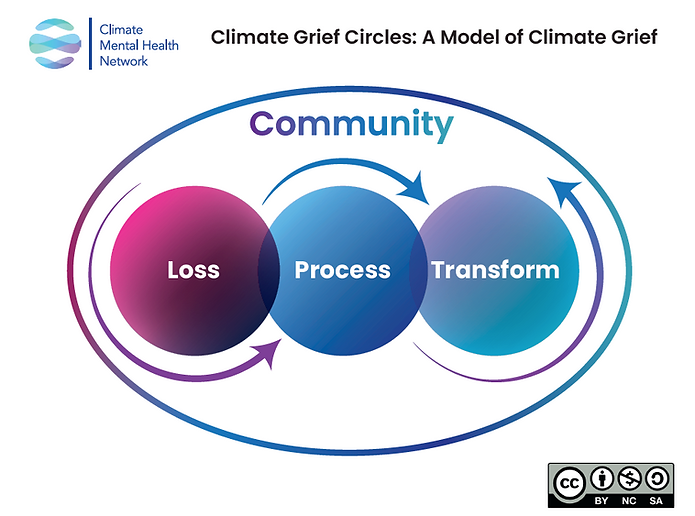
Ecological Grief Resources
Research shows that grief is one of the most common climate emotions. Our society tends to suppress grief and its expressions. But properly honoring and integrating grief helps us connect with others, with the earth as a whole, and to more fully experience a healthy range of emotions, including joy. These resources are informed by the research of Panu Pihkala.

This graphic is a simplified adaptation of Panu Pihkala's Process Model for Eco-anxiety and Ecological Grief, which also incorporates insights from other models of processing grief and pain like Joanna Macy's Spiral of The Work that Reconnects and William Worden's Four Tasks of Mourning. Accepting the reality of a loss happens gradually when we engage in processing the loss—alone or with others and somatically, intellectually, or creatively. This can evolve into an experience of transformation—but loss, and the need to process loss, never goes completely away.
Understanding How Climate Grief Connects to Different Emotions
These are some important actions and dynamics related to ecological/climate grief.
Sadness and other negative emotions deserve to be honored and expressed. They are important in themselves. Once we have made the time to name, express, and process our grief, we may want to turn to the question of “silver linings” or growth via grief. You are invited, alone or with others, to choose words that feel important to you in your grief process, and then to discuss them.
This activity is part of the Climate Mental Health Network’s guide All About Climate Grief: What to Know and What To Do About It by Panu Pihkala with Anya Kamenetz and Sarah Newman.




















